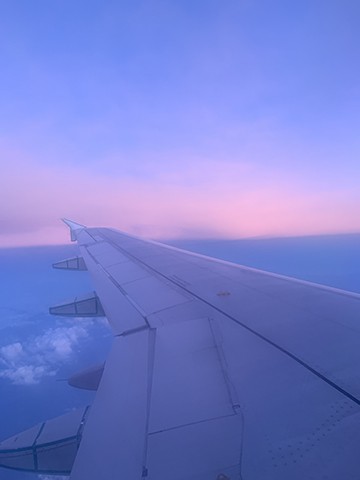Leanna Robinson rallies for Andalucía as a study abroad location for Spanish immersion

There is nothing quite like learning Spanish in Spain. While many people set their sights on popular large cities like Barcelona or Madrid, smaller and often overlooked cities, such as Granada, have many upsides as immersion locations. Looking outside of the mainstream has many advantages for students and is often rewarded with an enriching and unique experience that major cities cannot offer. I decided to see for myself what studying Spanish in Andalucía would be like and set off to Escuela Delengua in Granada this June to learn not only the language but the culture and history of the region as well.
Small-City Benefits
The allure of learning Spanish in larger cities is understandable—many social opportunities, big-city living, great restaurants, museums, entertainment, and large populations of foreign visitors. These upsides are also their downsides. In large, popular cities, many locals speak English in order to communicate with English-speaking travelers. Sometimes prospective learning environments where immersions students could practice their Spanish-speaking chops, such as restaurants, markets, and social situations, are missed out on because the students speak English instead of Spanish. While many people in smaller cities such as Granada speak English (and other languages like German and French), it is more likely to encounter Spanish monolinguals in a smaller city. This allows students to practice their Spanish-speaking skills at all times without reverting to English.
There is also something to be said about being able to settle into an immersion language-learning environment. In a large city such as Madrid or Barcelona, it can take months or even years to fully grasp and understand the layout of the city. Smaller cities, on the other hand, are easier to navigate and offer environments in which students can learn how to get around within days. This gives students an opportunity to feel as if they are living in a place rather than just visiting.
On Andalucía
The history of Spain and its various kingdoms is rich and complicated, making for good content for language learning, but the legacy of Moorish rule from the eighth to 15th century makes the historical background of the southern region of Spain unique and distinct. The large, autonomous region takes its name from Al-Andalus, the Arabic name for the Muslim-occupied area of modern-day Spain. In its early period, it was a medieval Muslim territory and cultural domain that occupied most of the Iberian Peninsula (Spain and Portugal) and even parts of France as far as the Alps. The boundaries of Al-Andalus changed as Christians reconquered the peninsula, eventually shrinking to the south around modern-day Andalucía, and then to the Emirate of Granada.
The 800 years of Arabic influence are evident in the architecture and culture of the streets of Granada, where Arabic is spoken alongside Spanish. This is especially common in the Albaicín, a district within the city that has retained its narrow, winding cobblestone streets from its medieval times and been rewarded with recognition as a World Heritage Site. Escuela Delengua is located at the lower end of this neighborhood, so I was lucky enough to walk through its streets every day. The influence of Granada on the history of Spain has been recognized in the national flag, where a part of the crest depicts a flower symbolizing the kingdom of Granada.
From the Alhambra in Granada to the Mosque–Cathedral of Córdoba to the Royal Alcázar of Seville, Andalucía is filled with architectural sites for language students to enjoy. A tip is to take audio tours of architectural sites in Spanish to further practice listening skills. A wonderful aspect of studying in Granada and Andalucía in general is that the region is dotted with villages called pueblos blancos, or white villages, which are just a short bus or car ride away. Most schools have planned excursions to take on the weekends, and Escuela Delengua offered trips to a region of these white villages called the Alpujarras. The region, which is located on the southern slopes of the Sierra Nevada mountains adjacent to Granada, is a great place to dig deeper into the Moorish history of the region. The villages were the last stronghold of the Moors when they fled from Granada in 1492 after being forced to convert to Christianity. When visiting the Alpujarras, I made sure to do as the locals do and eat the rustic food of the region, including chorizo, blood sausage, Serrano ham, and fresh eggs. Like much of Spain, it’s not quite a vegetarian’s paradise, although there are vegan and health-food stores in some of the villages.
Andalucía isn’t just mountains and villages, though. Just south of Granada is the Costa del Sol, a region of sprawling coastline with yellow-sand beaches, caves, and high-rise resorts. Málaga is a popular destination for both its beaches and its history. The city is the birthplace of Picasso and one of the oldest cities in the world, having been founded in 770 BC. Schools such as the Malaca Instituto offer intensive and superintensive classes for students looking for a more cosmopolitan beach environment for immersion classe
Granada is also a great place for language learners on a budget, as it is still
customary for bars and restaurants to offer free tapas to accompany each beverage ordered. Students should make like Granada locals and enjoy a glass of sangria or soda while munching on some free paella before setting back to their apartments or homestays for a siesta.
Learning Face to Face
When learning a second language, nothing beats learning in an immersion environment. I began my classes at Escuela Delengua by taking a placement test and was put in a small group of four people—with a French woman, a Scotsman, and a man from Austria. The mixed backgrounds made it fun and dynamic and improved my listening skills, as I had to learn how to understand Spanish in a French accent when talking to my classmate.
The first hour and a half were composed of a grammar lesson, followed by a 30-minute break and then an hour and a half of conversation with a different teacher. The teachers were enthusiastic and engaging, particularly since they incorporated current events and history into their lessons. I was lucky enough to be in Granada during their Corpus Christi—a week-long celebration of processions, flamenco, tapas, and music. The celebration happens in tandem with Granada’s feria, which is a standard fair complete with rides and cotton candy.
Each week we changed teachers, which kept the classes feeling fresh and interesting. Throughout the days and weeks, I felt myself growing more confident in the conversation part of class and could sense my Spanish improving. Like with anything, students get out what they put in. When taking immersion classes, it’s important to participate in conversations and activities instead of just going through the motions or sitting back quietly.
¡Estoy Flipando en Eolores!
Studying Spanish in Granada at Escuela Delengua was everything that I expected and more, and I cannot recommend it enough for people of any age interested in learning Spanish at an immersion school. Letting oneself soak in the southern Spanish air, surrounded by fields of sunflowers and olive trees, while listening to someone pluck a Spanish guitar in the distance sounds like a dream but is reality in Andalucía—a region perfect for settling in and learning about the language and culture of Spain.
Leanna Robinson is assistant editor and creative director of Language Magazine.





